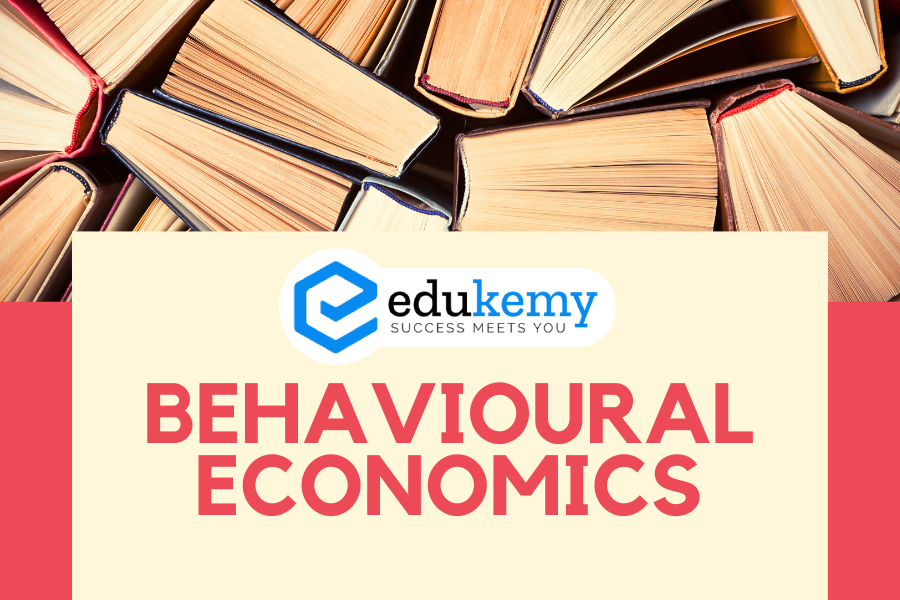
Behavioral economics is an interdisciplinary field that incorporates insights from various disciplines to analyze and influence economic behavior. Richard Thaler, a Nobel laureate in Economic Sciences in 2017, played a significant role in challenging the traditional assumption of rational expectations in economics. His work highlighted anomalies in human behavior that couldn’t be adequately explained by standard economic theories. This led to the emergence of behavioral science teams, often referred to as “nudge units,” which aim to influence behavior by making subtle contextual changes in decision-making environments.
Here are some key aspects of behavioral economics:
- Richard Thaler’s Contribution: Richard Thaler’s research revolutionized economic thought by recognizing that individuals often deviate from perfectly rational decision-making. His work shed light on behavioral biases and heuristics that influence economic choices.
- Nudges and Behavioral Influence: Nudges are interventions that aim to subtly influence people’s behavior without restricting their options or imposing penalties. By altering the context in which decisions are made, nudges can lead to more desirable outcomes.
- Applications in Micro and Macro Economics: Behavioural economics has a broad range of applications, from personal savings and tax compliance to broader societal issues like public health, education, and environmental conservation.
- Examples of Nudges: Nudges have been employed to promote a variety of societal goals. This includes initiatives like the Swachh Bharat Mission in India, which encourages cleanliness and hygiene. Other examples include motivating individuals to formalize their businesses, participate in volunteer work, or comply with tax regulations.
- Economic Survey 2019 and Behavioural Economics: The Economic Survey of India in 2019 drew heavily from Richard Thaler’s behavioral economics theory. It advocated for leveraging nudges to drive positive social change and improve the implementation of various government schemes. This included initiatives such as the Swacch Bharat Mission, Jan Dhan Yojana, and Beti Bachao Beti Padhao for gender equality.
Behavioral economics has emerged as a powerful tool for understanding and influencing economic behavior. By recognizing that individuals do not always act in purely rational ways, policymakers can design interventions that lead to more effective outcomes in both individual decision-making and broader societal challenges.
FAQs
Q: What is Behavioral Economics?
A: Behavioral economics is a field of study that combines insights from psychology and economics to understand how individuals make decisions. It recognizes that people often deviate from rationality and traditional economic models, instead exhibiting predictable patterns of behavior influenced by cognitive biases and social factors.
Q: What are Cognitive Biases?
A: Cognitive biases are systematic patterns of deviation from rationality in judgment or decision-making. These biases affect individuals’ perceptions, preferences, and decisions, often leading to choices that may not be in their best interest. Examples include confirmation bias, anchoring bias, and loss aversion.
Q: How does Behavioral Economics differ from Traditional Economics?
A: Traditional economics assumes that individuals are rational actors who make decisions to maximize their own utility or well-being. In contrast, behavioral economics recognizes that people’s decisions are often influenced by psychological factors, such as emotions, social norms, and cognitive biases. It focuses on understanding and predicting these deviations from rationality.
Q: What are Nudge Theory and Choice Architecture?
A: Nudge theory, popularized by behavioral economists Richard Thaler and Cass Sunstein, suggests that small changes in the way choices are presented or “choice architecture” can influence individuals’ decisions in predictable ways, without restricting their freedom of choice. By designing environments that make certain choices more salient or easier to select, policymakers can guide people toward better outcomes, such as healthier behaviors or increased savings.
Q: What are some Real-World Applications of Behavioral Economics?
A: Behavioral economics has been applied in various domains, including public policy, marketing, finance, and healthcare. For example, governments use behavioral insights to design more effective policies for tax compliance, retirement savings, and environmental conservation. In marketing, companies leverage principles of behavioral economics to design persuasive advertisements and pricing strategies. Additionally, behavioral economics informs strategies for improving patient adherence to medication and promoting healthier lifestyles.
In case you still have your doubts, contact us on 9811333901.
For UPSC Prelims Resources, Click here
For Daily Updates and Study Material:
Join our Telegram Channel – Edukemy for IAS
- 1. Learn through Videos – here
- 2. Be Exam Ready by Practicing Daily MCQs – here
- 3. Daily Newsletter – Get all your Current Affairs Covered – here
- 4. Mains Answer Writing Practice – here

